Il cineturismo a Monselice e nei Colli Euganei
Euganea Film Tour è lo sviluppo di un percorso che ha visto impegnate la Regione del Veneto, l’OGD Terme e Colli, l’Università degli Studi di Padova, ETIFOR, il Comune di Monselice e le organizzazioni del territorio euganeo con l’obiettivo di creare nuovi prodotti ed esperienze turistiche a Padova e sui Colli Euganei, sviluppando alcuni filoni tematici come quello del turismo cinematografico.
Euganea Film Tour nasce dal progetto Cult-CreaTE, finanziato dal Programma di Cooperazione Interregionale Interreg Europe 2014-2020 che mira a rafforzare la sinergia tra il sistema turistico e le imprese culturali-creative presenti nel Veneto e nelle altre regioni coinvolte, ed è a cura di Euganea Movie Movement con il patrocinio della Veneto Film Commission.
Il cineturismo è un particolare tipo di turismo stimolato e indotto dalla visione dei luoghi che il cinema mette in scena. Un fenomeno che esiste già da alcuni anni, ma se prima si presentava come una pratica limitata agli amanti del cinema, oggi sembra assumere nuove dimensioni e caratteristiche. Si viaggia per apprendere e vivere la quotidianità dei luoghi che si visitano, si cercano attività uniche e immersive da fruire in modo sostenibile e responsabile ed è proprio in questa prospettiva che trova spazio il cineturismo.
Il cineturismo è un segmento chiave della promozione del territorio e di ciò che esso offre, potrebbe diventare un settore strategico dell’economia anche nel Veneto (dove sono stati girati oltre tremila film) e permettere di integrare altri prodotti turistici, ad esempio quello enogastronomico, cicloturistico e fluviale, strategici per il nostro territorio.
Nei Colli Euganei sono stati girati non solo film importanti (Il mercante di Venezia, 2004; Sole a catinelle, 2013) ma anche serie TV di successo. Produzioni italiane come RAI e Fandango (L'alligatore, 2020) e internazionali (Atalantique Productions, Canal +, Eos Enterteinment e distribuzione SKY per I Borgia, 2011) hanno scelto i Colli come location principale per le riprese.
Il risultato del progetto è la creazione di quattro percorsi cineturistici che si sviluppano tra le bellezze naturali ed artistiche del Parco Regionale dei Colli Euganei. Il percorso per lo sviluppo del progetto parte da Monselice che diventerà la "capitale cine turistica" dei Colli Euganei, utilizzando gli spazi di Villa Pisani come riferimento per le informazioni turistiche, punto di partenza dei percorsi cine turistici e spazio dedicato all'approfondimento dei film e delle serie Tv girate nel nostro territorio.
Il lavoro di mappatura e di raccolta dei dati riguardanti il cinema è stato svolto in collaborazione con Giulia Lavarone e Farah Polato, docenti presso l’Università degli Studi di Padova, e la ricercatrice Laura Cesaro, impegnate nell'approfondimento e nello studio della relazione tra cinema e turismo. A questo è seguita la creazione degli itinerari di durate e difficoltà diverse, da percorrere in bicicletta o in macchina.
Gli itinerari sono disponibili sulla web app euganeafilmtour.it , uno strumento agile e adatto alla fruizione dei contenuti del progetto. All’interno della web app è presente una mappa interattiva per mostrare le tappe del tour e sono disponibili a tutti una serie di approfondimenti cinematografici relativi ai film che sono stati girati sui Colli Euganei con immagini e video riguardanti le scene e le location utilizzate per le riprese. Per ogni film e serie tv sono presenti i trailer, le sinossi, i dati tecnici e un approfondimento chiamato “relazione con il territorio” che contestualizza l’opera filmica con i luoghi turistici dei Colli.
I punti di interesse evidenziati nei percorsi contengono, quindi, un mix di informazioni turistico/cinematografiche e materiali mediatici (trailer, backstage, frame e altro) per arricchire l’esperienza dell’utente.
ITINERARI CINETURISTICI
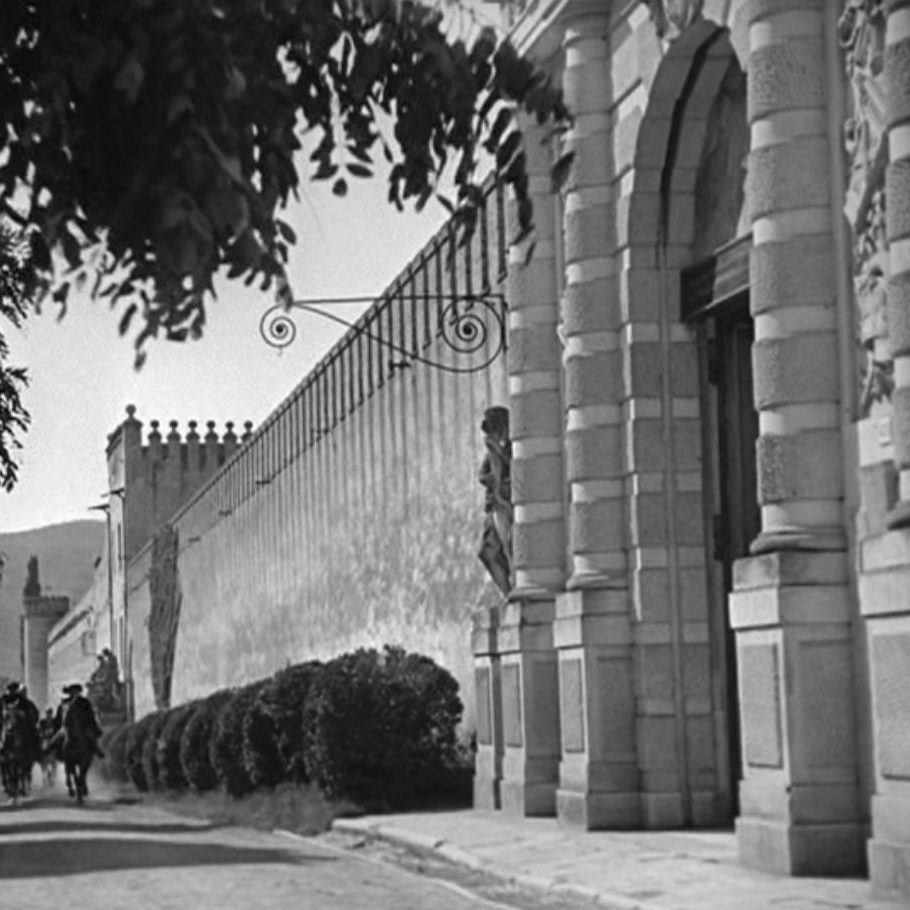
CINEMA D'AUTORE
Dino Risi, Alberto Lattuada, Salvatore Samperi, Elio Petri sono solo alcuni degli autori che hanno riconosciuto nel Parco dei Colli Euganei una location suggestiva. Questo percorso, interamente dedicato al cinema d’autore, offre la possibilità di visitare due tipologie di paesaggio: il primo tra le alture, dove beni di interesse storico culturale sono immersi nella natura selvaggia; il secondo nella zona pianeggiante delle terme, ai piedi dei Colli. L’itinerario è accessibile da più punti; tra questi si segnalano i centri di Abano, Montegrotto e Battaglia Terme, in particolare per coloro che intendono giungere in prossimità a mezzo treno o automobile. Si consiglia di programmare il percorso in anticipo per poter visitare, tenendo conto degli orari di apertura, il patrimonio storico e culturale di questi affascinanti territori.
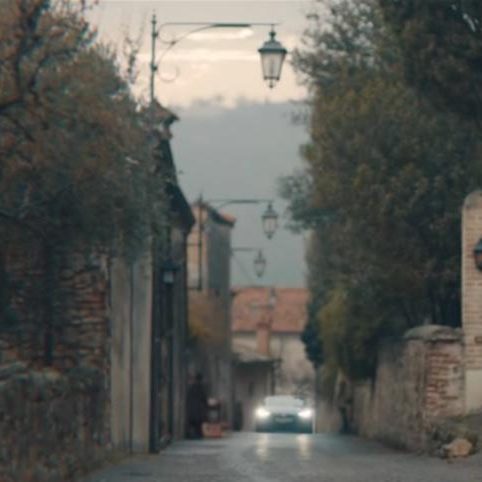
CINEMA E VILLE
Nel ricco panorama di siti culturali del Parco Regionale dei Colli Euganei, la fanno da padrone sfarzose dimore, ville venete e complessi monumentali, sorte spesso in prossimità di corsi d’acqua: luoghi piacevoli e suggestivi. Villa Barbarigo e i settecenteschi giardini di Valsanzibio, villa Selvatico-Sartori e il Castello del Catajo sono solamente alcune delle suggestive tappe che potrete visitare lungo il percorso, alla scoperta di film e serie televisive che in questi luoghi hanno trovato le loro location. Per vivere al meglio l’esperienza, si consiglia di seguire l’itinerario in senso orario: sarà più semplice percorrere il tratto tra il borgo medievale di Arquà Petrarca e Galzignano Terme. Questo primo tratto del percorso, interamente asfaltato, permette uno snodo che consente due diverse opzioni: proseguendo da Bresseo di Teolo verso Selvazzano Dentro, una breve deviazione consente di poter ammirare Villa Emo Capodilista, detta “La Montecchia”; altrimenti il percorso procede verso il monumentale complesso dell’Abbazia di Praglia per ricongiungersi al rettifilo sterrato lungo la sponda destra del Canale Battaglia che vi ricondurrà verso Monselice.
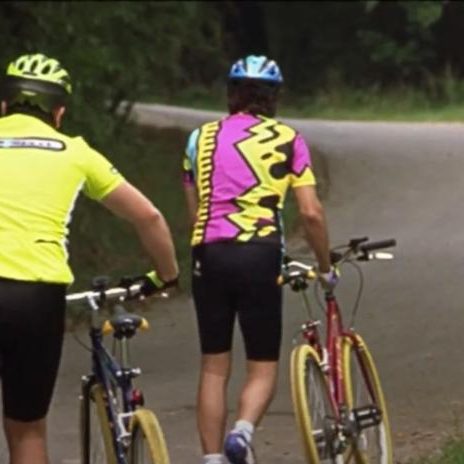
TOUR MAZZACURATI MOUNTAINBIKE
Completamente immerso nei Colli Euganei, l’itinerario proposto permette al ciclista più esperto di visitare il cuore pulsante del Parco Regionale attraverso i luoghi più conosciuti dei film di Carlo Mazzacurati. Giunti in prossimità del complesso monumentale di Valsanzibio, che offre un ampio parcheggio liberamente accessibile, il percorso conduce al sentiero di Calto Callegaro che corre lungo il corso d’acqua da cui prende il nome. Al crocevia con via Scalette, presso Arquà Petrarca, è possibile scegliere se proseguire e fronteggiare la salita verso la località di Faedo: si potrà visitare il paesaggio che ha protetto i due protagonisti in fuga de La lingua del santo (2000), ripercorrendo l’iconico tratto in salita di via Roverello che Willy e Antonio hanno perlustrato travestiti da ciclisti. La discesa conduce al punto panoramico del pianoro del Mottolone, belvedere naturale sui Colli. Il percorso si conclude con un ritorno verso Galzignano tra suggestive vastità di ulivi e vigneti. Poche le fontane presenti nell’itinerario: si consiglia di partire equipaggiati. Si consiglia l’uso della mountain bike per la strada ripida e in alcuni tratti scoscesa.

TOUR MAZZACURATI SEMPLICE
Questo percorso ciclabile, che offre la possibilità a quanti lo percorrono di immergersi in uno splendido paesaggio tra incantevoli borghi storici e le verdi alture del Parco Regionale dei Colli Euganei, è interamente dedicato alla figura di Carlo Mazzacurati, il più importante regista padovano. Dalla sorgente termale in cui si immerge la protagonista di Notte italiana, primo lungometraggio, al Laghetto della Costa in cui i due compari de La lingua del Santo gettano il maggiolino, sino a Monselice, città dove sono state girate molte scene dell’ultimo film, La sedia della felicità: lungo il tracciato punteggiano il territorio le principali location scelte dal regista, alternate a siti d’interesse culturale. È possibile completare il percorso in un’unica giornata in sella alla bici, all’insegna della quiete e lontano dalle affollate caotiche città, ma altresì programmare soste per assaporare il fascino dell’antica città di Este o del borgo medievale di Arquà Petrarca. Lungo il percorso si incontrano sia alcune aree attrezzate per la sosta, sia punti di ristoro nelle località attraversate. Per vivere al meglio l’esperienza, si consiglia di percorrere l’itinerario in senso orario.
PER MAGGIORI INFORMAZIONI

Film tourism in Monselice and in the Euganean Hills
Euganea Film Tour is the development of a process that has involved the Veneto Region, the OGD Terme e Colli, the University of Padua, ETIFOR, the Municipality of Monselice and organizations in the Euganean area with the aim of creating new products and tourist experiences in Padua and the Euganean Hills, developing some thematic strands such as film tourism.
Euganea Film Tour is the result of the Cult-CreaTE project, financed by the Interregional Cooperation Programme Interreg Europe 2014-2020, which aims at strengthening the synergy between the tourism system and the cultural-creative enterprises in Veneto and in the other regions involved, and is organised by Euganea Movie Movement under the patronage of Veneto Film Commission.
Cinetourism is a particular type of tourism stimulated and induced by the vision of places that the cinema stages. It is a phenomenon that has existed for a number of years, but if it was previously limited to film lovers, it now seems to have new dimensions and characteristics. People travel to learn and experience the everyday life of the places they visit, they look for unique and immersive activities to be enjoyed in a sustainable and responsible way and it is in this perspective that cine-tourism finds its place.
Film tourism is a key segment in the promotion of the territory and what it has to offer; it could become a strategic sector of the economy also in the Veneto region (where more than three thousand films have been shot) and enable the integration of other tourist products, such as food and wine, cycling and river tourism, which are strategic for our territory.
Not only important films (The Merchant of Venice, 2004; Sole a catinelle, 2013) but also successful TV series have been shot in the Euganean Hills. Italian productions such as RAI and Fandango (L'alligatore, 2020) and international ones (Atalantique Productions, Canal +, Eos Enterteinment and SKY distribution for I Borgia, 2011) have chosen the Hills as the main location for filming.
The result of the project is the creation of four film-tourist routes through the natural and artistic beauties of the Euganean Hills Regional Park. The development of the project starts from Monselice, which will become the "film-tourist capital" of the Euganean Hills, using the Villa Pisani as a reference point for tourist information, as a starting point for the film-tourist routes and as a space dedicated to the films and TV series shot in our territory.
The work of mapping and collecting data on cinema was carried out in collaboration with Giulia Lavarone and Farah Polato, professors at the University of Padua, and the researcher Laura Cesaro, who are engaged in the study of the relationship between cinema and tourism. This was followed by the creation of itineraries of different lengths and difficulties, to be covered by bicycle or car.
The itineraries are available on the euganeafilmtour.it web app, an agile tool suitable for the use of the project's contents. Within the web app there is an interactive map to show the stages of the tour and a series of in-depth film reports on the films that have been shot in the Euganean Hills are available to everyone, with images and videos of the scenes and locations used for filming. For each film and TV series there are trailers, synopses, technical data and an in-depth section called "relationship with the territory" that contextualises the film with the tourist locations in the Hills.
The points of interest highlighted in the routes therefore contain a mix of tourist/cinematic information and media materials (trailers, backstage, frames and more) to enrich the user experience.
CINE-TOURS ITINERARIES
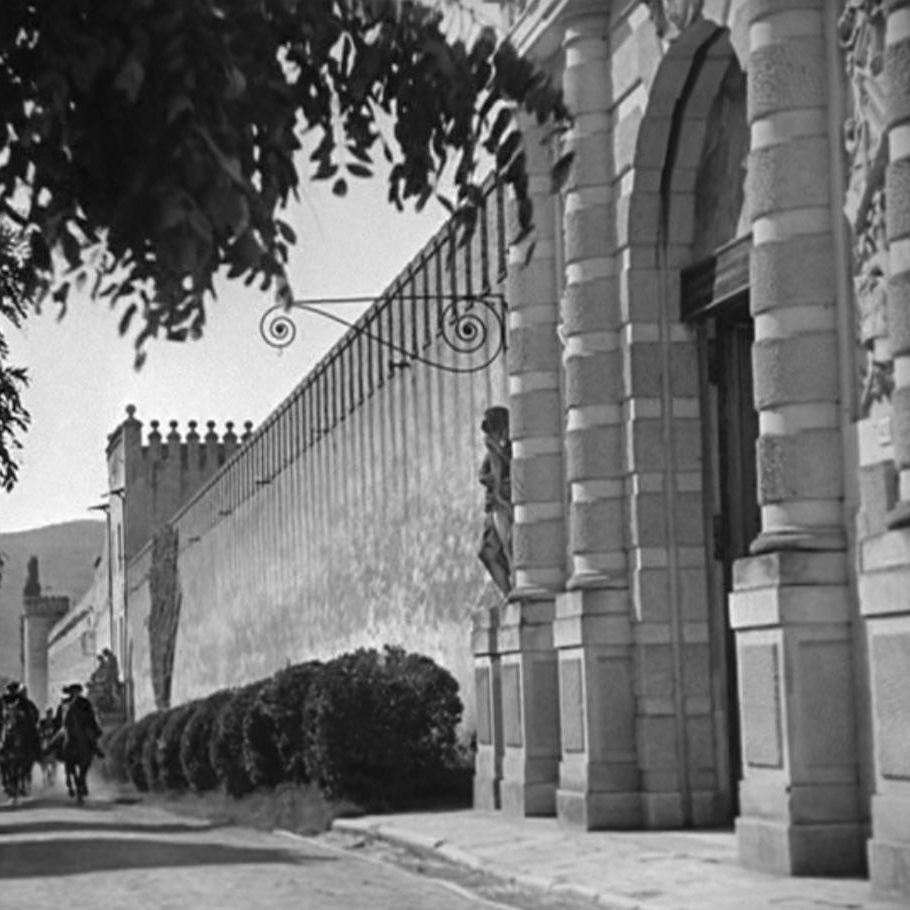
CINEMA D'AUTORE
Dino Risi, Alberto Lattuada, Salvatore Samperi, Elio Petri are just some of the authors who have recognised the Euganean Hills Park as an evocative location. This route, entirely dedicated to auteur cinema, offers the opportunity to visit two types of landscape: the first among the hills, where assets of historical and cultural interest are immersed in the wilderness; the second in the flat area of the spa, at the foot of the Hills. The itinerary is accessible from a number of points, including the towns of Abano, Montegrotto and Battaglia Terme, particularly for those who intend to reach the area by train or car. It is advisable to plan the route in advance so as to be able to visit the historical and cultural heritage of these fascinating areas, taking into account the opening hours.

CINEMA E VILLE
In the rich panorama of cultural sites in the Euganean Hills Regional Park, magnificent residences, Venetian villas and monumental complexes, often located near watercourses, are the main attractions: pleasant and evocative places. Villa Barbarigo and the eighteenth-century gardens of Valsanzibio, Villa Selvatico-Sartori and the Castello del Catajo are just some of the suggestive stops you can visit along the way, discovering the films and television series that have found their locations in these places. To enjoy the experience to the fullest, we recommend you follow the route clockwise: it will be easier to travel the stretch between the medieval village of Arquà Petrarca and Galzignano Terme. This first section of the route, which is entirely tarmac, provides a junction that allows two different options: continuing from Bresseo di Teolo towards Selvazzano Dentro, a short diversions allows you to admire Villa Emo Capodilista, known as "La Montecchia"; otherwise the route proceeds towards the monumental complex of the Praglia Abbey to rejoin the dirt track along the right bank of the Canale Battaglia that will take you back towards Monselice.
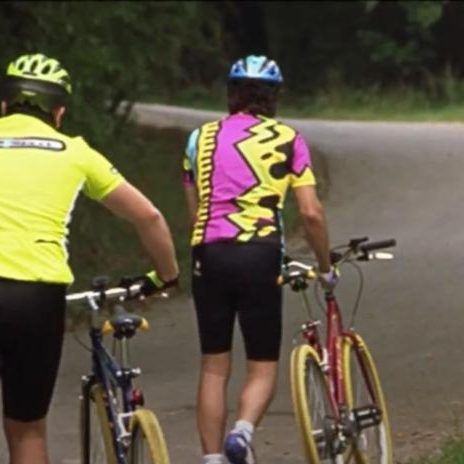
TOUR MAZZACURATI MOUNTAINBIKE
Completely immersed in the Euganean Hills, the proposed itinerary allows the more experienced cyclist to visit the heart of the Regional Park through the most famous places of Carlo Mazzacurati's films. Arriving near the monumental complex of Valsanzibio, which offers a large, freely accessible car park, the route leads to the Calto Callegaro path that runs along the watercourse from which it takes its name. At the crossroads with Via Scalette, near Arquà Petrarca, it is possible to choose whether to continue and face the climb towards the village of Faedo: you can visit the landscape that protected the two escaping protagonists of La lingua del santo (2000), retracing the iconic uphill stretch of Via Roverello that Willy and Antonio explored disguised as cyclists. The descent leads to the vantage point of the Mottolone plateau, a natural viewpoint over the hills. The route ends with a return towards Galzignano amidst evocative expanses of olive groves and vineyards. There are few water fountains along the itinerary, so it is advisable to start equipped. The use of a mountain bike is recommended due to the steep road and some steep sections.

TOUR MAZZACURATI SEMPLICE
This cycle path, which offers those who travel along it the chance to immerse themselves in a splendid landscape among enchanting historic villages and the green heights of the Euganean Hills Regional Park, is entirely dedicated to the figure of Carlo Mazzacurati, Padua's most important film director. From the thermal spring in which the protagonist of Notte italiana, his first feature film, plunges, to the Laghetto della Costa in which the two companions of La lingua del Santo throw the Beetle, to Monselice, the town where many scenes of his last film, La sedia della felicità, were filmed: along the route the main locations chosen by the director dot the territory, alternating with sites of cultural interest. It is possible to complete the route in a single day in the saddle, in peace and quiet and far from the crowded chaotic cities, but also to plan stops to savour the charm of the ancient city of Este or the medieval village of Arquà Petrarca. Along the route you will find some equipped areas for resting, as well as refreshment points in the towns you pass through. To best enjoy the experience, we recommend following the route in a clockwise direction.

